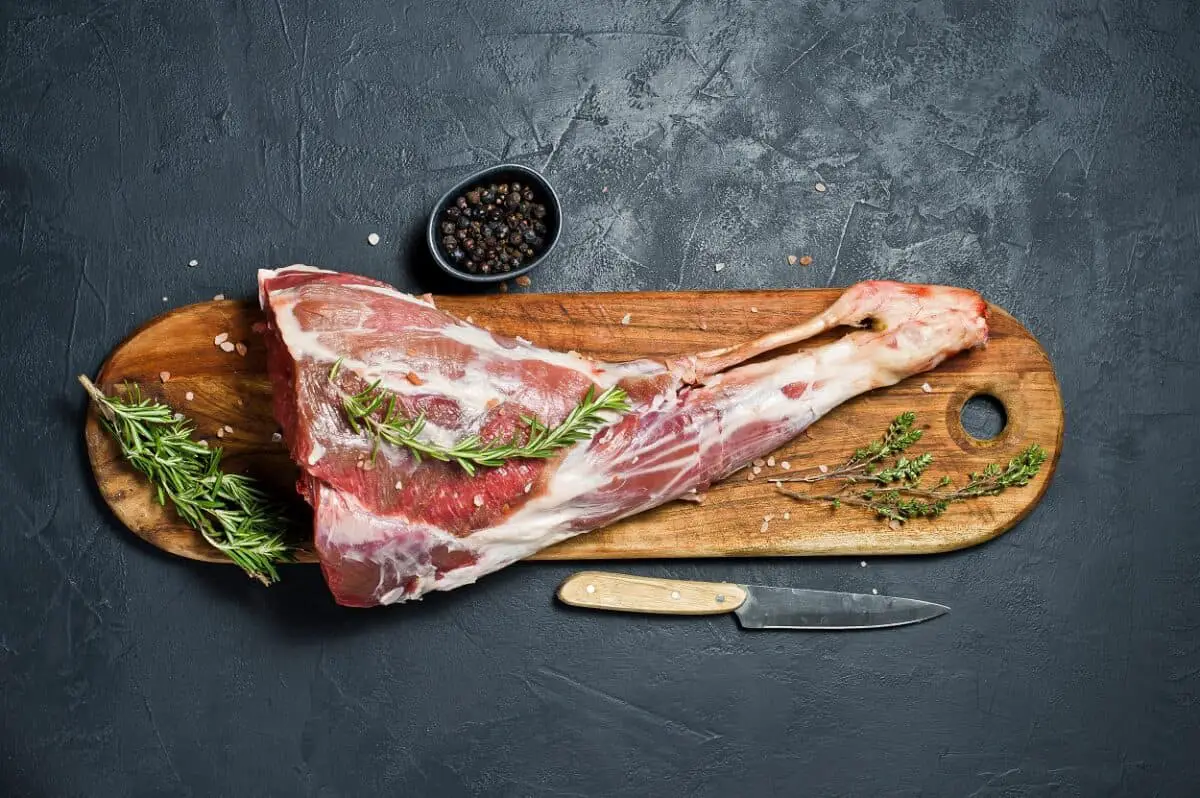Last Updated on 17th December 2021 by
One of the most challenging parts of cooking a leg of lamb can be carving it. Some people get intimidated by the work they have to do, and not having much experience in carving this particular cut of meat can make them hesitant to even try cooking the lamb.
The way you carve the lamb is important for a few reasons. It gives you the right look for each slice, as people expect their food to look a certain way. When you cut the leg of lamb, the slices you end up with are going to look a certain way depending on how you cut them.
Knowing how to carve a leg of lamb is important as well because of how it affects the toughness or tenderness of the meat. Did you know that the way meat is sliced can help to determine how easy it is to chew through. When you cut, you may cut through connective tissues and other tough bits that would be harder to chew on. It’s important that you cut the leg of lamb in a way that severs connective tissues and other components that would make for tough eating.
Knowing how to carve leg of lamb is also important because it can affect the way the lamb is cooked. If you carve the leg improperly, it may make for a tougher cut of meat that needs to be cooked longer or cooked in a certain way to accommodate for its toughness. When you get a tough slice of meat, you have to treat it differently than you would a tender slice of meat. You want it to be edible and enjoyable, and that may mean cooking it a different way.
What to Use
Part of carving the leg of lamb (or any cut of meat) in the right way is using the right kind of knife. For some cuts of meat, you need to use a particular knife to get the right effect. The wrong kind of knife can make it tough to cut through the meat properly. The right kind of knife makes for easy cutting.
So, what kind of knife should you use to carve a leg of lamb? I suggest using a chef’s knife and making sure it is very sharp. The sharper the knife is, the easier your job of carving will be.
You should also get a cutting board to help control the meat and keep it from sliding around. The cutting board will also protect your countertops, preventing you from making nicks and scratches on them and preserving your finish.
How to Carve a Leg of Lamb with Bone in
Examine your leg of lamb and look where the bone runs through. The bone is placed in the leg at an angle, and you have two large cuts of meat on the two sides of the bone. Begin by cutting the side of meat that feels like the easiest to get to- the most accessible.
Use the knife to cut off slices against the grain of the meat. Cut all the way down through the meat until you reach the bone. You will be cutting across the grain and at an angle perpendicular to the bone, if you are carving the lamb properly.
Cut through all of the meat as you work from one end of the bone to the other. Keep slicing all the way down to the bone every time to give yourself the largest possible slices of meat. The slices will still be attached to the bone where they meet, and you will want to sever that connection. Do this by turning your knife to be perpendicular to the bone and cutting from one end to the other. As you cut, make sure you are keeping your knife as close to the bone as possible. This is how to carve a leg of lamb bone in without wasting any meat.
You aren’t getting every last bit of meat at this point, simply doing as best you can to get the majority of it. You want to focus on making sure your cuts through the meat are clean slices, and then you can get the remainder of the meat later on.
Take the slices of meat you have cut and move them to a serving plate. Cover your plate with foil to trap in the heat and to ensure the meat stays warm.
Now, turn the leg of lamb over and repeat the process on the other side. The angle is different on that side, so the carving may feel a little odd and awkward.
How to carve half leg of lamb bone in and get all the meat off? After the two slicing sessions on either side of the bone you have already done, you can start cutting off the extra meat that is left. There will still be plenty of meat after you have removed the large slices. You might not want to add them to a large serving platter, but they can be used for making soup, stir fry, sandwiches, and other dishes that don’t require large slices of lamb. The bone can be used to make a soup stock.
How to Carve a Boneless Leg of Lamb
If the lamb has no bone in it, because it has been removed, then you are looking at an easy carving job. You just make your slices from top to bottom, working from one end of the lamb to the other. This is really simple, and you get big slices. There is no bone to work around, so the carving goes very quick.
You can use a similar cutting technique for how to carve a semi boneless leg of lamb. Just slice all the way through the meat on the parts that have no bone, and once you get to the bone, use the carving method described earlier for a bone in leg of lamb.
Knowing a good carving method is important if you are going to get nice looking pieces and get cuts that are not too tough. How you cut isn’t as important for lamb as it is for a tougher meat like beef, but it is still somewhat important. You can use these same techniques for how to carve a leg of lamb roast, but a cut of beef would be different. Each cut of beef requires its own carving technique, so be sure to look up my other articles on how to carve different cuts of beef before you attempt that.
Once you know the right way to cut, carving becomes much easier. You can carve with confidence, knowing that your slices will turn out nicely, and be easy to eat and easy to cook. If you carved well, then you can follow any decent recipe on how to cook a leg of lamb. Your meat should turn out succulent and tender because you cut the proper way.
It is best to cook your lamb meat right after you slice it or shortly afterwards. Lamb only stays fresh for a few days in the fridge, and once you slice it, you have opened up the interior of the lamb and offered pests and bacteria a lot more surface area to infect. So, keep your lamb slices covered until you are ready to cook them, and try to cook them up within a few days of buying the lamb for the best taste and freshness.
I'm Pauline, a mother of four grown children, my passion for cooking stemmed from the joy i get cooking for my family. I love to try new dishes, especially when dining out but creating and sharing my own recipes is my favourite thing to do!


